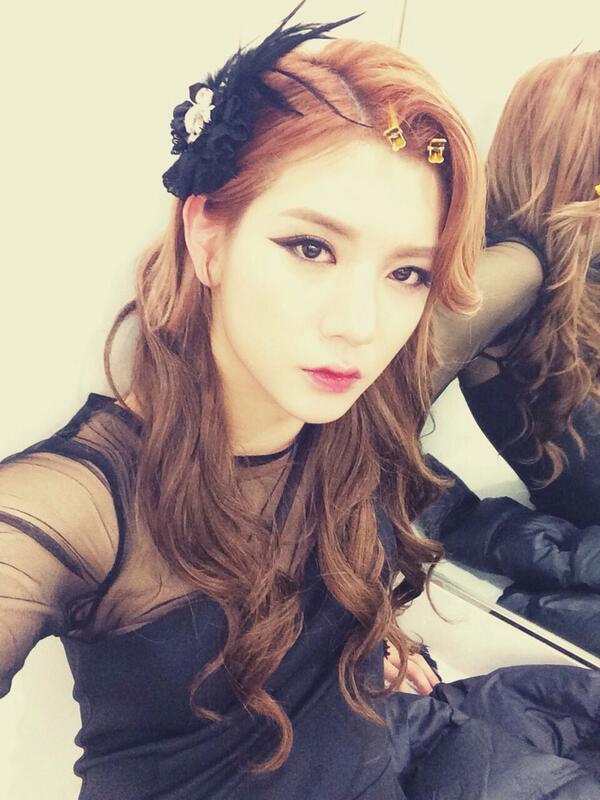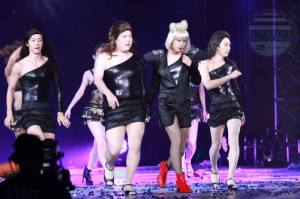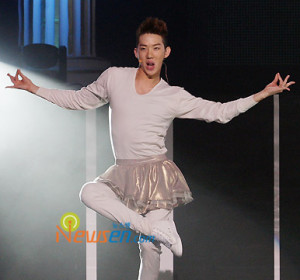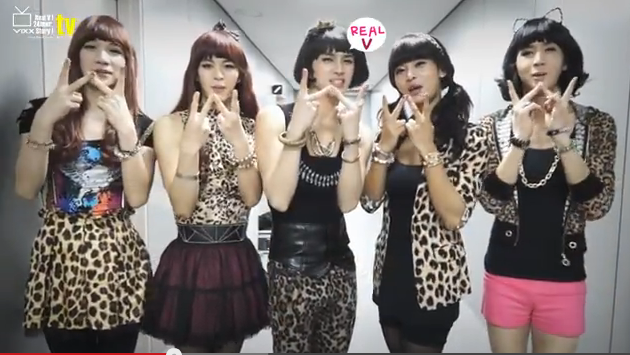 The topic of cross-dressing in K-pop been discussed on this site extensively and intensively both in the past and in the present. But with Ren recently blurring gender boundaries all over again, I realized a clear distinction still yet needs to be made between cross-dressing performances which have a serious intent to emulate, and performances which are conceived with the idea to mock i.e., parodies. While one may argue that the end result is the same — an unrestricted bout of laughter — the presence or absence of an intention to mock makes a huge difference in audience reception.
The topic of cross-dressing in K-pop been discussed on this site extensively and intensively both in the past and in the present. But with Ren recently blurring gender boundaries all over again, I realized a clear distinction still yet needs to be made between cross-dressing performances which have a serious intent to emulate, and performances which are conceived with the idea to mock i.e., parodies. While one may argue that the end result is the same — an unrestricted bout of laughter — the presence or absence of an intention to mock makes a huge difference in audience reception.
I have watched Boys’ Day’s “Something” around five times now, with the first few times dedicated to appreciating Ren and the rest to figure out what, according to public opinion, made the performance hilarious. However, I could never really pin the source of unrestricted laughter unless of course the laughter induced was socially conditioned…
[youtube http://youtu.be/HVTtCSMdIgg]Performances like these dilute gender binaries as one gender effortlessly transforms into the other, albeit momentarily, causing a society functioning on gender binaries to run into frenzy, followed by discomfort and agitation at the ‘distorted’ picture performing before them. The ‘illusion’ creates a tense and uncomfortable environment when suddenly every gendered realm turns grey, and in the fear of being called homophobic and/or transphobic one patiently waits for someone to clear the confusion with a liberating laugh. One laugh and that’s it, that’s the license to homophobic, transphobic and misogynistic responses because the sheep has finally found its herd.
 However, cross-dressing parodies encourage mockery and laughter. When that grey zone of hesitation, of reconsideration, of rethinking is wiped under the dusty carpet of ‘satirical’ mockumentaries, it serves as a medium to channel visceral hatred of marginalized and discriminated communities; and the enthusiastic participation of the audience in propagating the same creates a virtual mob clamping down on minorities, leeching off on their identities for their hurtful punch lines.
However, cross-dressing parodies encourage mockery and laughter. When that grey zone of hesitation, of reconsideration, of rethinking is wiped under the dusty carpet of ‘satirical’ mockumentaries, it serves as a medium to channel visceral hatred of marginalized and discriminated communities; and the enthusiastic participation of the audience in propagating the same creates a virtual mob clamping down on minorities, leeching off on their identities for their hurtful punch lines.
Performances like 2PM’s and 2AM‘s “Dirty Eyed Girls” and A-Prince’s “Something” while claiming to be ‘parodies’ — an artist’s cynical medium of exposing the workings of an oppressive society — were actually a grotesque celebration of male cisgender privileges contingent on mocking female idols, and gaining the appreciation of heterosexual cisgendered males. These groups conceived the notion of gender as performance as opposed to Butler’s performativity choosing certain characteristics of femininity to mock; it is a careful filtering of features which conform to traditional notions of femininity. Hence, what we have is an organized attempt at selective understanding of manhood and womanhood.
[youtube http://youtu.be/GX0tDGLjyDk]Therefore, no one can attempt to seek reprieve from harsh reproaches by submitting to the role of ‘pure’ infantile or the ‘unconscious’ hyper-sexual because a woman in herself is considered an aberration and no matter what the form, the aberration itself can never be validated which is why ‘sexy’ girl group dances are often the victims of savage mockery for they are doubly deviated: a woman with sexual desires.
Consequently, they never consciously adopt the roles of desirable objects in parodies, injecting exaggerated male subjectivity into the objectification of women. Genuinely subjecting themselves to a proper representation of a girl group performance — complete with raunchy clothes — could have at least served as an eye opener for them, as well as for the consumers of the hyper-sexualized performances as to how the ‘sexy’ concepts only cater to the tastes of the objectifying male gaze, as they come off looking ridiculous on men.
 That would have been the right kind of ridiculous, the one which induces laughter at the societal priorities imposed upon a woman but with the convenient selection of clothes which either barely shows any skin or shows a desexualized body; viewers end up laughing at the woman once again, perceiving her to be the embodiment of hyper-sexualized desires, and shaming her for the same. And it’s not only the clothes which contribute to this convoluted understanding of the exploitation of the ‘sexy’ concept, it’s also the complicity of the camera which does not focus on their chest and crotch as opposed to its perverted workings during music shows.
That would have been the right kind of ridiculous, the one which induces laughter at the societal priorities imposed upon a woman but with the convenient selection of clothes which either barely shows any skin or shows a desexualized body; viewers end up laughing at the woman once again, perceiving her to be the embodiment of hyper-sexualized desires, and shaming her for the same. And it’s not only the clothes which contribute to this convoluted understanding of the exploitation of the ‘sexy’ concept, it’s also the complicity of the camera which does not focus on their chest and crotch as opposed to its perverted workings during music shows.
However, to some extent these parodies do portray how every inch of and every move by the female body is sexualized and unlike the male body, is associated with shame, and stepping out of its realm of misogyny, transphobia and homophobia, it raises another issue rather tangentially: the performance-identification relationship.
With transgender politics growing in momentum, a misconception floats in popular discourse that ‘performing’ as a certain gender entails identifying with it, failing to acknowledge the presence of the ‘middle space’ and often, conflating the space with drag culture. The ‘middle space’ is that space which essentially lies between traditional womanhood and traditional manhood.
 Not wanting to appropriate, and enthusiastically encouraging any needed correction, I believe people falling in the ‘middle space’ may unconsciously find themselves attracted to certain aspects of the opposite gender without identifying with it i.e., a man may occasionally or even everyday, want to wear a skirt not because he identifies as a ‘woman’ but because he wants to; not as a fetish but because he feels more comfortable. Literally cross-dressing, these people may also refuse to identify with any gender given their fluidity. In such a case there are no gender binaries whatsoever as a single person ricochets between real life parodies of genders, muddying the neat picture of gender binaries the cross-dressing parodies had intended to reinstate.
Not wanting to appropriate, and enthusiastically encouraging any needed correction, I believe people falling in the ‘middle space’ may unconsciously find themselves attracted to certain aspects of the opposite gender without identifying with it i.e., a man may occasionally or even everyday, want to wear a skirt not because he identifies as a ‘woman’ but because he wants to; not as a fetish but because he feels more comfortable. Literally cross-dressing, these people may also refuse to identify with any gender given their fluidity. In such a case there are no gender binaries whatsoever as a single person ricochets between real life parodies of genders, muddying the neat picture of gender binaries the cross-dressing parodies had intended to reinstate.
While the mockery persists, these parodies with their men in skirts tangentially bring forth this lesser known class of people. What you see onscreen therefore ends up being a representation of a minority population of men who wear dresses but don’t identify as ‘women’ stretching the boundaries of masculinity, that surprise surprise, you can be both ‘man’ and ‘woman’ and still acknowledge none, or both, or either. Gender passing, even when available, is consciously refused for a gender non-conformity which while diluting genders ideologically, physically portrays a ‘conflicting’ confluence.
Therefore, obliquely, male to female cross-dressing parodies carry the potential of refuting gender passing as they compel viewers to gaze at the male body in a female garb, claiming to be of a certain gender but performing the other, creating a liberating space for gender masquerade.
(Youtube [1] [2] [3] New York Times, The Bilerico Project)



